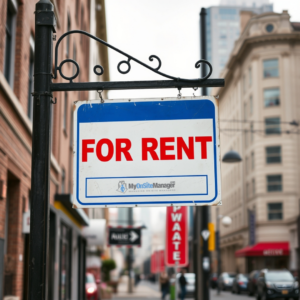In recent months, the U.S. rental market has experienced a notable cooling, with rent growth decelerating from the unprecedented highs observed during the pandemic. As of the second quarter of 2024, national rents saw a modest annual increase of 0.2%, a significant drop from the 15.3% surge recorded in early 2022. Despite this slowdown, current rent levels remain substantially higher than pre-pandemic figures, standing approximately 20.9% above those from five years ago.
Regional Variations in Rent Trends
The moderation in rent growth has not been uniform across the country, with distinct regional differences emerging:
- Northeast and Midwest: These regions continued to experience rent increases, with annual growth rates of 2.4% and 2.7%, respectively, in the second quarter of 2024. Although these figures are lower than the double-digit growth seen in 2022, they indicate sustained upward pressure on rents.
- West: The Western markets have softened considerably, with rents remaining unchanged on average over the past year, a stark contrast to the 15.1% growth observed two years prior.
- South: The Southern region experienced an annual rent decline of 1.4% in the second quarter of 2024, a significant shift from the 16.6% growth recorded two years earlier.
Metropolitan Areas: Divergent Rent Dynamics
At the metropolitan level, rent trends have varied widely:
- Increases: Midwestern cities such as Kansas City, Milwaukee, Cleveland, Cincinnati, and Columbus saw rent increases ranging from 2.7% to 3.4%. Similarly, in the Northeast, Newark (2.6%), Pittsburgh (2.3%), and Boston (2.2%) experienced comparable growth.
- Declines: Conversely, several Southern and Western markets reported rent decreases. Austin led with a 7.4% drop, followed by Jacksonville (5.2%) and Atlanta (4.6%). In the West, Phoenix (3.4%), Salt Lake City (2.8%), and Oakland (1.1%) also saw declines.
Long-Term Rent Growth Since 2019
Despite recent moderation, rents remain significantly elevated compared to pre-pandemic levels:
- South: Even with recent declines, rents have increased by 22.9% since 2019.
- Midwest and Northeast: These regions are catching up, with rents rising 22.1% and 21.4%, respectively, over the same period.
- West: Rents have increased by 18.5% since before the pandemic.
Notably, Sunbelt markets have experienced the most significant rent increases in recent years. For instance, West Palm Beach’s rents have surged by 38.6% since 2019, despite recent annual declines. Other markets with substantial rent growth include Fort Lauderdale (35.7%), Greensboro (34.9%), Tampa (34.4%), and Riverside (33.0%).
The Impact on Renters and the Market
The pandemic-era rent hikes have exacerbated affordability challenges for many renters, as incomes have not kept pace with rising housing costs. Although new construction has helped moderate rent growth, this relief may be temporary due to recent declines in multifamily housing starts.
Furthermore, the availability of rental units remains a pressing issue. High mortgage rates and economic uncertainty have led to an increase in rental demand, as more people delay homeownership and opt to rent instead. However, this demand continues to outpace supply in several key markets, making it difficult for renters to find affordable housing.
Future Considerations and Solutions
Addressing these affordability issues will require a multifaceted approach, including:
- Increased rental subsidies for low-income households to offset high rental costs.
- Preservation of existing rental stock to prevent displacement of long-term tenants.
- Support for new housing construction that prioritizes moderate- and lower-income households.
- Zoning reforms to allow for increased housing density in high-demand areas.
The government and local policymakers will need to work collaboratively with developers and housing advocates to create sustainable solutions that ensure housing remains accessible for all income levels.
Conclusion
While the U.S. rental market is cooling in terms of rent growth, the reality remains that rental prices are still significantly higher than pre-pandemic levels. This ongoing affordability crisis underscores the need for targeted policy interventions and innovative housing strategies to create a more balanced and sustainable rental market for the future.
Source: Rental Markets Are Cooling, but Rents Still Far Exceed Pre-Pandemic Levels

